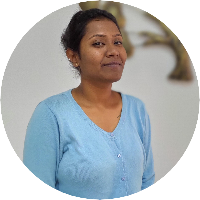But I must explain to you how all this mistaken idea of denouncing pleasure and praising pain was born and will give you a complete account of the system and expound the actual teachings of the great explore
Contact Us
India has a unique education system designed to uphold its nation’s culture, history, values, and customs. While traditionally, education in India was reserved mostly for the higher-caste children, new education policies have been aiming to achieve equity in education and the right to education for all children irrespective of social class.
Though education is accessible to all, many are dropping out of school or are unable to find livelihoods to sustain themselves. This means that the system needs to be constantly updated to suit the needs of the changing demographics.
A modern approach to education
STEM education is a teaching approach that combines science, technology, engineering and math. Getting a definition for STEM is easy enough: it stands for Science, Technology, Engineering, and Math. So take a biology class in college, and technically you're taking a class that’s a part of STEM.
However, STEM is much more than just a useful way of grouping subjects in a catchy acronym.
At its core, STEM is a teaching philosophy that integrates all four disciplines into a single, cross-disciplinary program which offers instruction in real-world (as opposed to purely academic) applications and teaching methods.
As a philosophy, STEM is meant to create a program that integrates all four disciplines in a way that forces the student to use cross-disciplinary knowledge to solve problems. This essentially means that the traditional learning style —typically some form of memorization and recitation of information or rote learning—is pretty much out the window.
Overthrowing older methods of learning
STEM education in India is a much-needed revolution in the education industry that has the potential to reshape the child’s future.
There are two basic methods of learning- Rote Learning & STEM learning The first method of learning is the traditional Rote learning which is based on memorizing the information based on repetition. It is a learning process based on repetition. Understanding concepts or facts is not a requirement for rote learning. The students can learn and repeat verbatim material memorized without understanding, critical thinking, or analyzing what they have learned.
Common Examples of these include memorizing the multiplication tables, periodic tables, etc.
Although Rote learning is practiced throughout the country for years the drawback of this type of traditional learning is that the students don’t get a better understanding of the subject. Also, there is no connection between the new and previous knowledge memorized by the student.
On the other hand, STEM learning explains to the students how they can solve real-life problems by using their knowledge. It teaches various types of useful innovative skills to students such as computational thinking, problem-solving skills, creative thinking, logical reasoning, better decision making, and good observation power.
By successfully performing the experimentation the students will build self-confidence among them which will help them a lot in their overall development. The students will understand the true value of teamwork when they engage in performing STEM-related activities together. They will also understand the power of team management and collaboration by understanding their roles in the team properly.
Implementing STEM education in rural areas
BharatCares, a social impact arm of CSRBOX, has initiated a unique EdTech programme- Bharat e-Shiksha. With its 3L model – Learning, Life skills and Library, they have set up Digital Learning Centers (DLCs) in rural and semi-urban areas across multiple cities in India.
Adopting a hybrid model of teacher and technology, they connect students and education with preloaded digital tablets.
The lessons are interactive and the syllabus is focused on students in classes 6 -8. The subjects they mainly focus on are STEM subjects and English as per the respective State Education Board guidelines.
The initiative emphasized the holistic development of a child. This is done by penetrating life skills through the virtual life skills-building sessions under the learned guidance of domain-specific experts.
Share:

Roshini Muthukumar, a native of Chennai, started her career as a content writer but made a switch to journalism to pursue her passion. She has experience writing about human interest stories, innovative technology, entrepreneurs, research blogs, and more. Previously, Roshini has done internships with The Hindu, Metroplus and worked as a correspondent with The Better India.